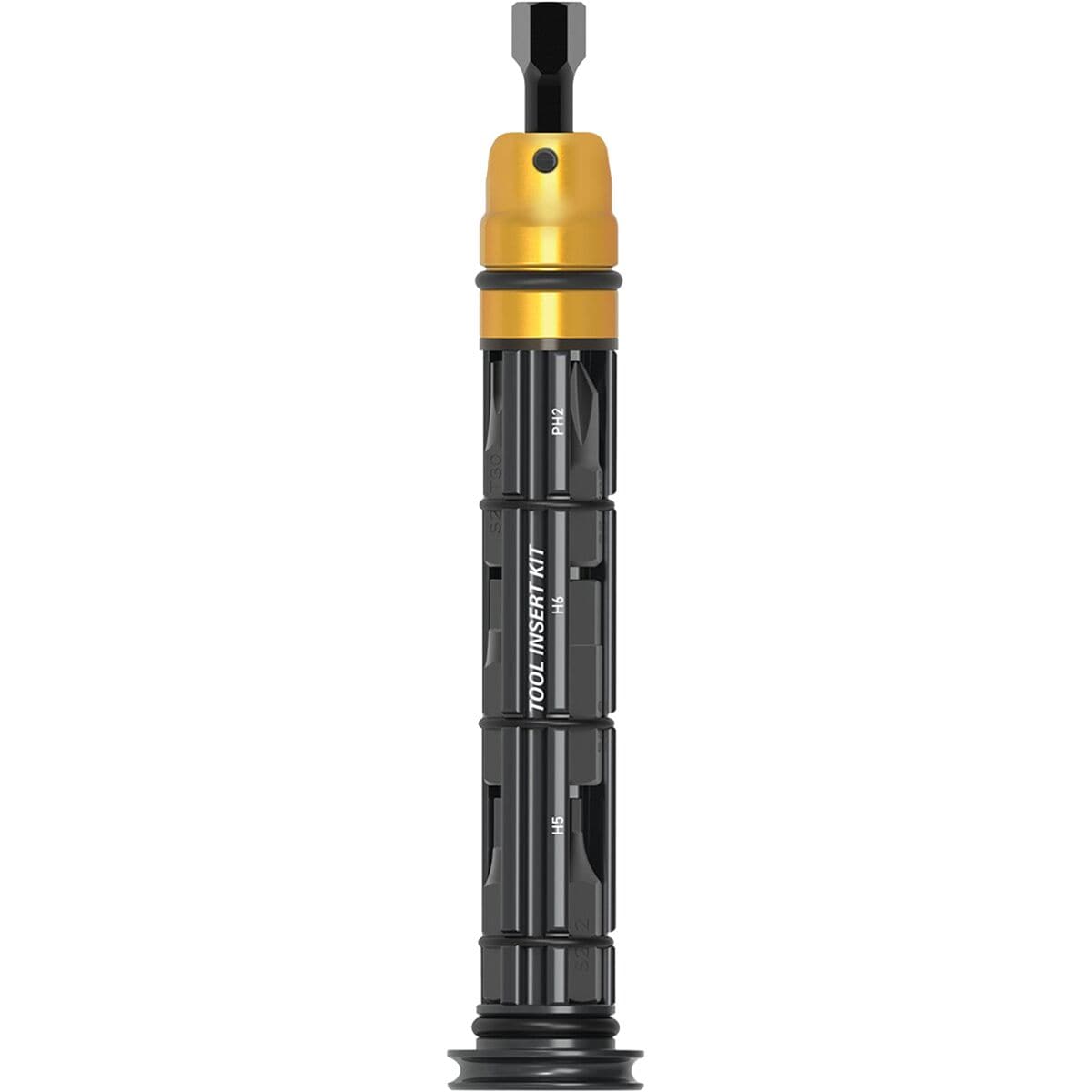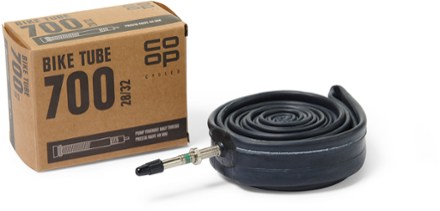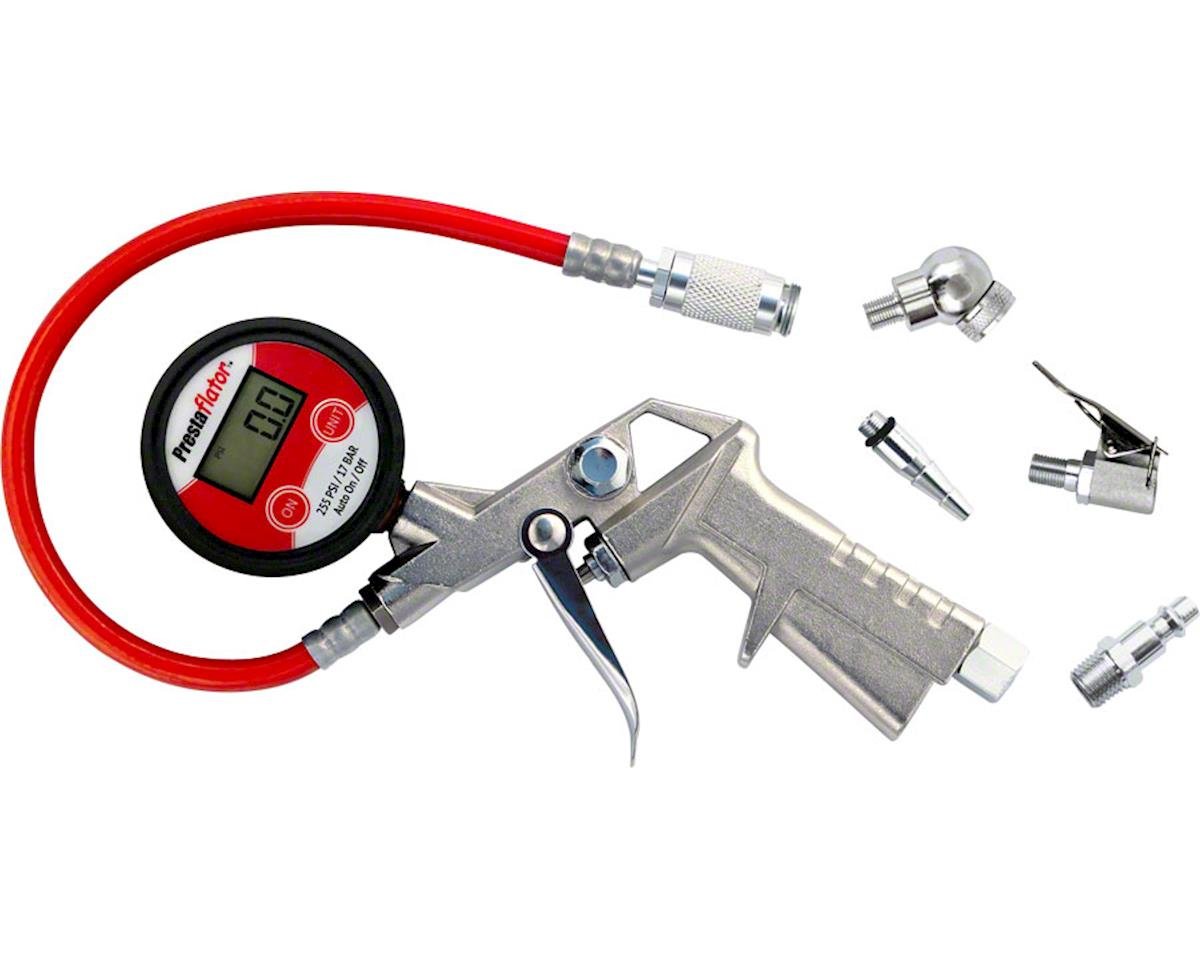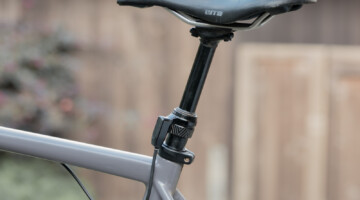Ask your cycling friends about Spurcycle, and they will likely respond, “The bell company!” The California-based company started by Nick and Clint Slone is best known for its bike bell first launched in 2013. Since successfully ringing into the bike market, the two brothers have continued to add to the company’s product line.
Although its bell was inspired while navigating bike and pedestrian traffic on the Golden Gate Bridge, Spurcycle offers other products that are right at home on gravel roads. Two of those products are the $45 Saddle Bag and $69 titanium and steel Tool multi-tool.
I have taken both products along for the ride during several gravel rides as well as some road and mountain bike outings this year. Find out if Spurcycle’s Saddle Bag and Tool are ready to answer the call and join for your next gravel ride.
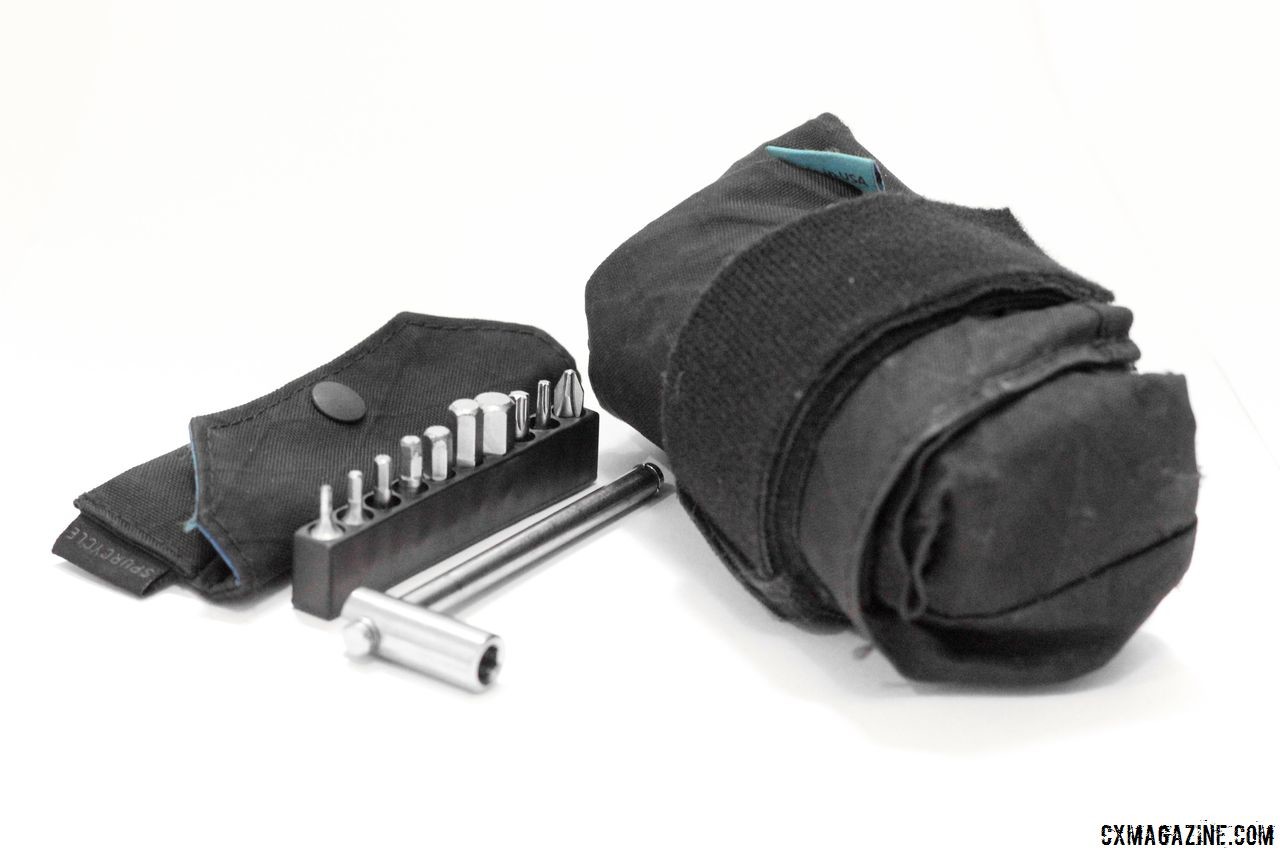
The Spurcycle Saddle Bag and Tool multi-tool are two products from the CA company that can help out on gravel roads. Spurcycle Saddle Bag and Multi-Tool. © Cyclocross Magazine
Spurcycle Saddle Bag
Growing up, the family garage always seemed to have a couple traditional saddle bags with two straps for the rails and one for the seat post sitting around ready for family rides. The Spurcycle Saddle Bag takes a different approach with a single strap and a large bag that rolls up to be fastened underneath the saddle. At first look, the Spurcycle Saddle Bag appears similar to the Silca Premio Seat Roll we reviewed last year, save the Boa closures.
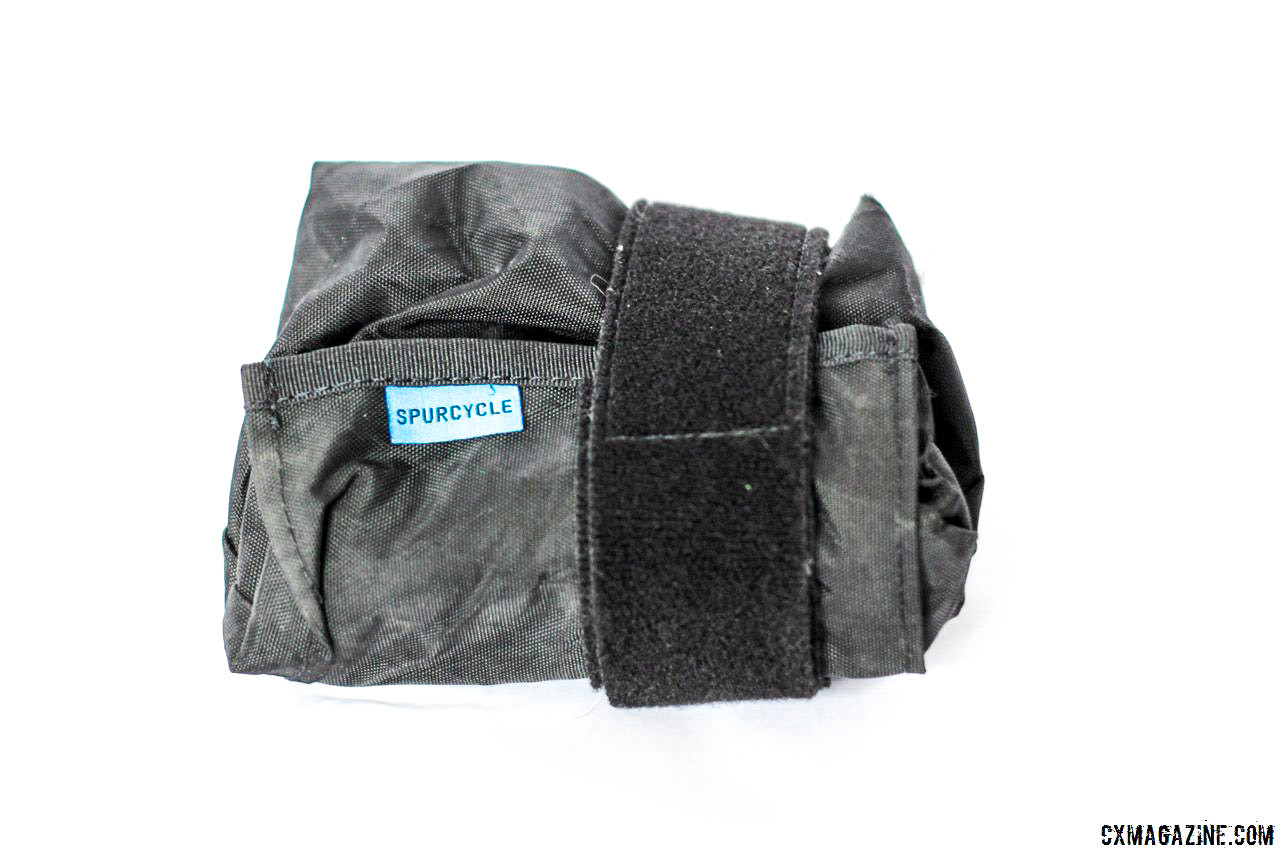
A detachable velcro strap wraps up the Spurcycle saddle bag. Spurcycle Saddle Bag and Multi-Tool. © Cyclocross Magazine
The Saddle Bag itself is a 12.5 x 18 x 6cm bag made from X-PAC VX42 polyester that the company claims is waterproof. A velcro pad is sewn onto one side to provide an attachment point for the strap that is made from two-sided velcro. The bag and strap weigh 53g.
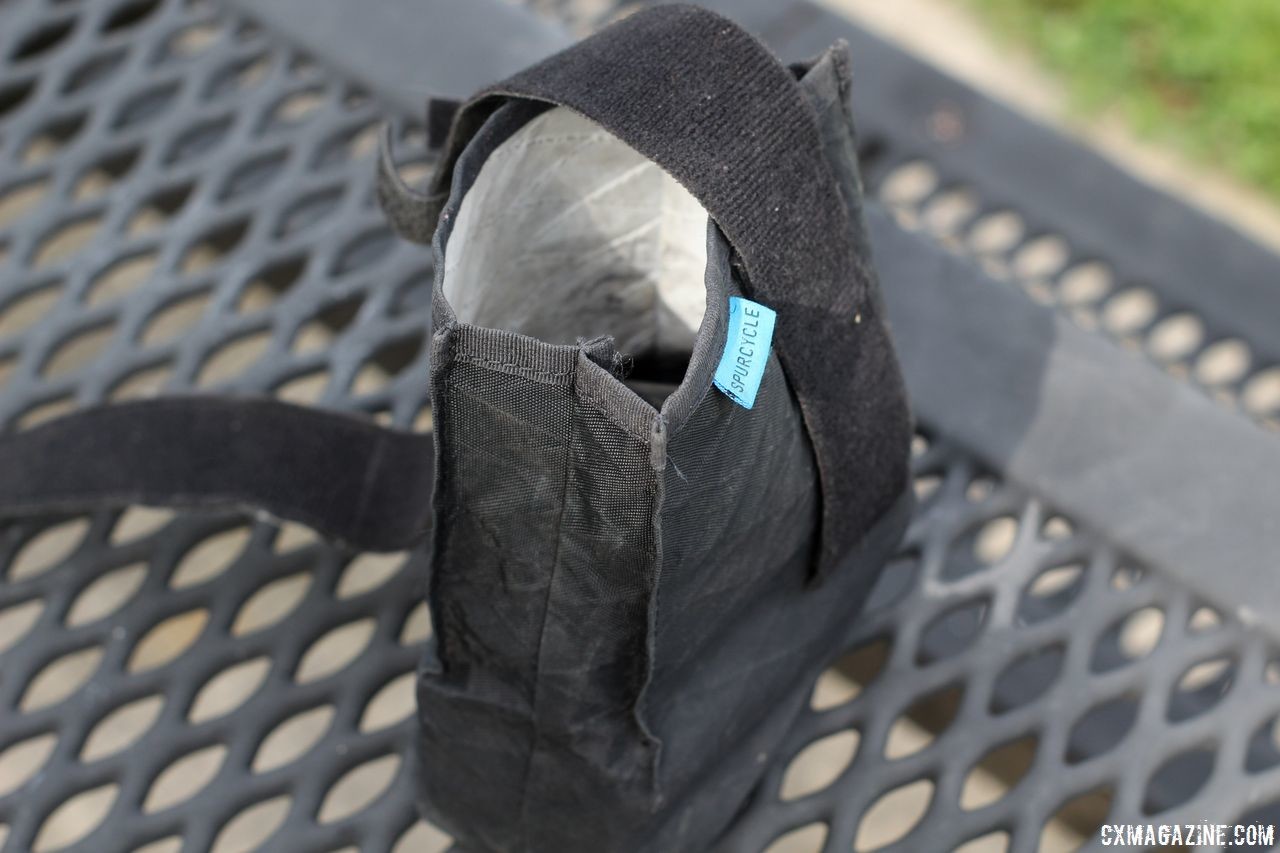
The Saddle Bag has a wide opening and a healthy amount of storage space. Spurcycle Saddle Bag and Multi-Tool. © Cyclocross Magazine
Using the Saddle Bag is pretty straightforward. You pack your spare tubes, CO2 cartridges and gear into the bag, tightly fold it up and then wrap the velcro strap around the saddle rails once. You then feed the free end of the strap through the rails, tighten the strap around the bag and then secure the setup with two small velcro tabs that lock it in place.
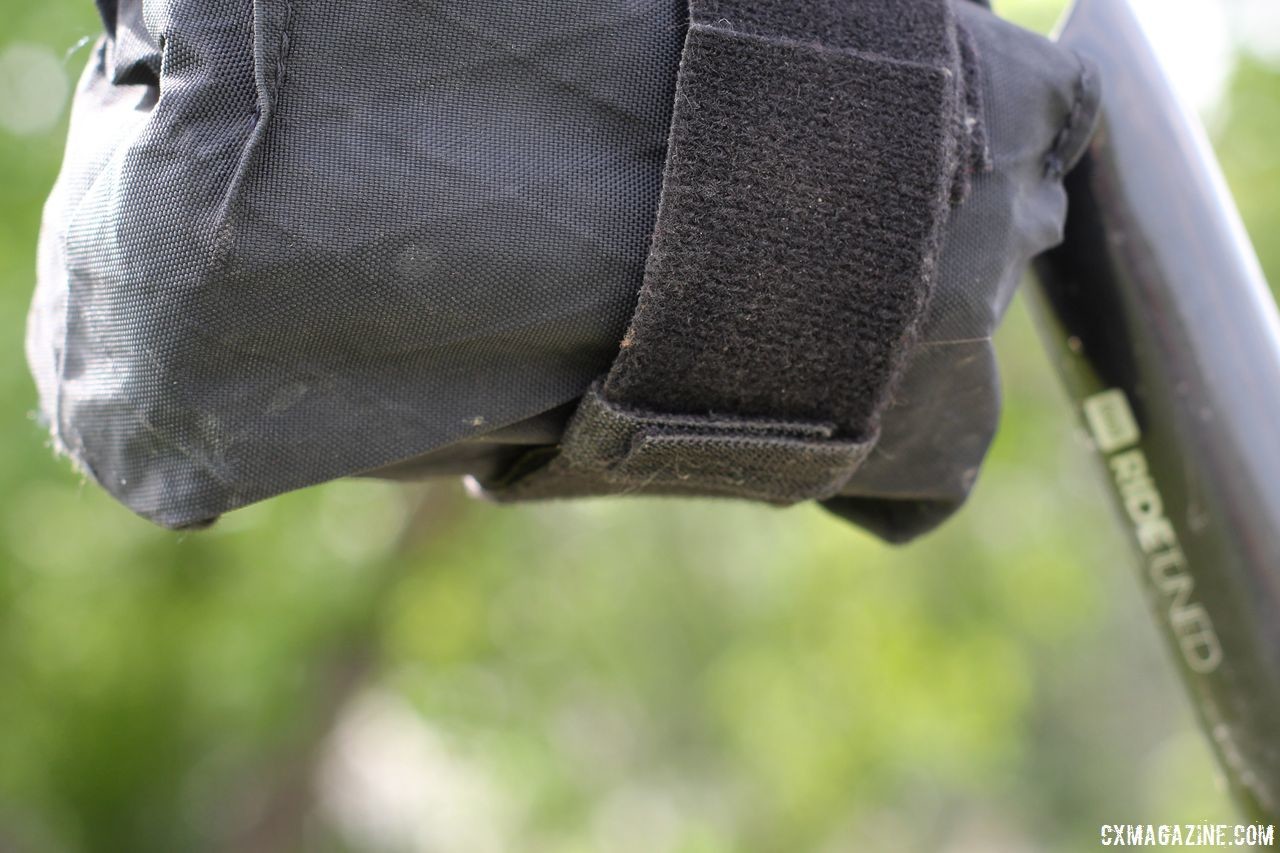
The small velcro tabs help keep the bag secure. Spurcycle Saddle Bag and Multi-Tool. © Cyclocross Magazine
Over the last several months, I have used the Spurcycle Saddle Bag for gravel centuries, local group road rides and several weekend mountain bike trips.
After using the Spurcycle bag, I really like the bag/roll approach to saddle bags. The bag has a good amount of storage, and the contents are easy to access inside the bag. I also really liked the relative ease of swapping the Saddle Bag between bikes, which is helpful if you are like me and mix and match your riding disciplines in a given week.
A criticism with the “roll” approach that we noted in our review of the Silca Premio is you have to remove the roll every time you want to access it. That is the case for the Spurcycle bag as well, but I have found “traditional” saddle bags difficult to access while they are attached to my bike as well.
Storage-wise, the Spurcycle Saddle Bag is roomy and easy to pack up. For the Dairy Roubaix gravel ride in April, I fit two 700c x 38-45mm tubes, the Spurcycle Tool and two KMC tire levers into the bag and fit it under my saddle. It was a bit bulky, but it did the job of toting my emergency gear during the 107-mile ride.
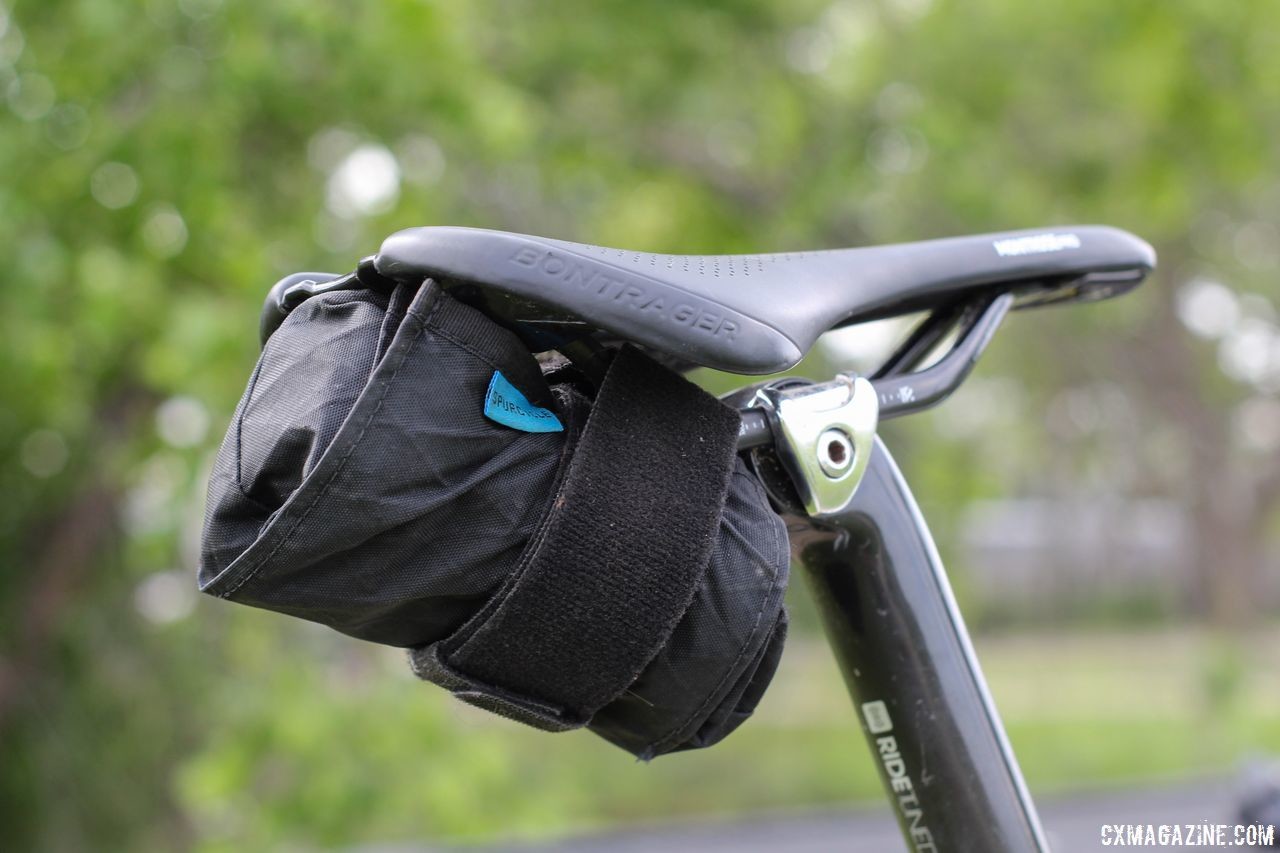
Seen here with two tubes, two tire levers and a multi-tool, the Saddle Bag fits under the saddle. Spurcycle Saddle Bag and Multi-Tool. © Cyclocross Magazine
For regular road and mountain biking, the Saddle Bag securely holds an extra tube, multi-tool and tire levers with no problem.
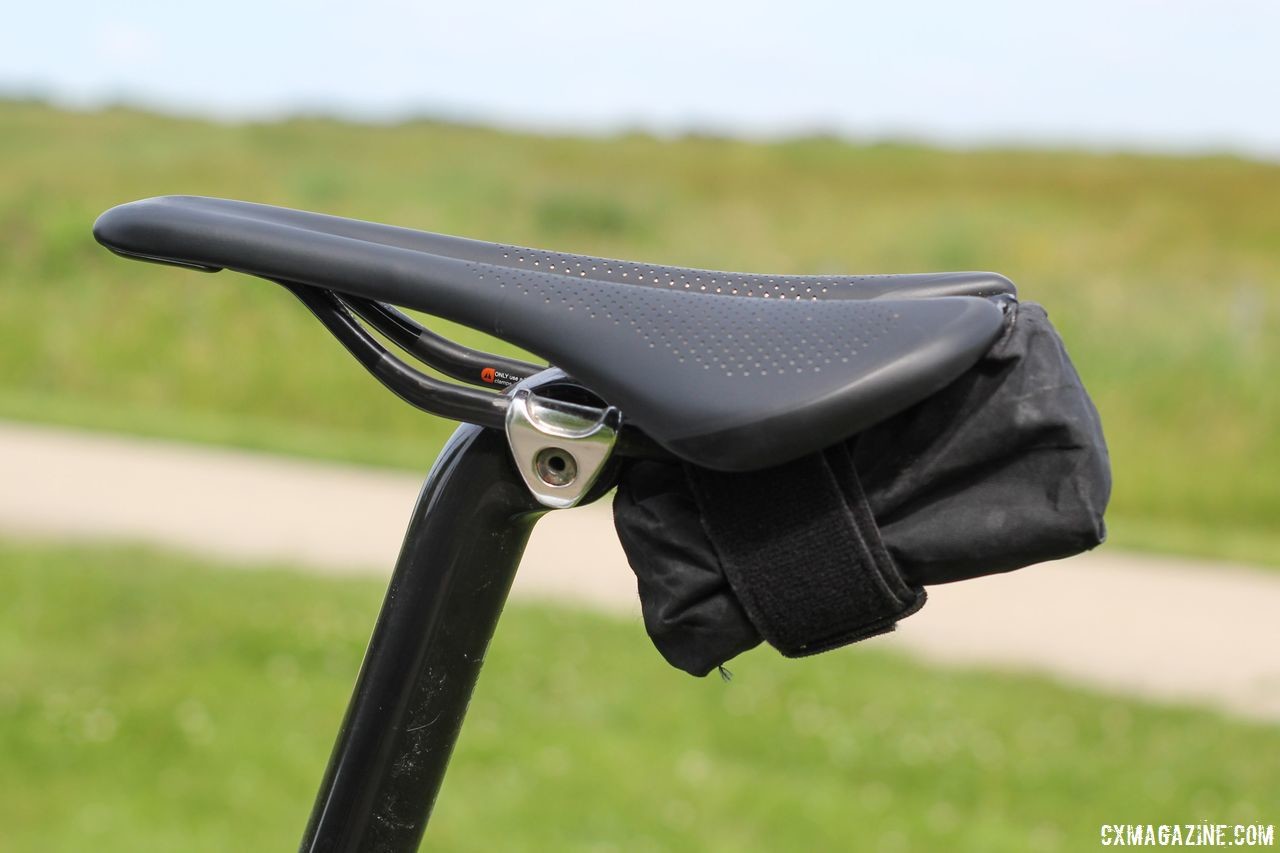
The Saddle Bag fits under the saddle more securely with one tube versus two. Spurcycle Saddle Bag and Multi-Tool. © Cyclocross Magazine
The two biggest issues I had with the Spurcycle Saddle Bag are somewhat related. The instructions Spurcycle provides are written in black on a black card. “How hard can it be to attach a saddle bag?” you might ask. Good point, but if you do not use the two small velcro tabs to secure the strap, the chances of the bag falling off over rough terrain increase dramatically. (I may or may not be speaking from experience)
Even when using the small velcro tabs, the bag came loose on one road and one mountain bike ride. The issues may have been due to user error, but attaching the Saddle Bag does take some extra care and attention when riding on rough roads.
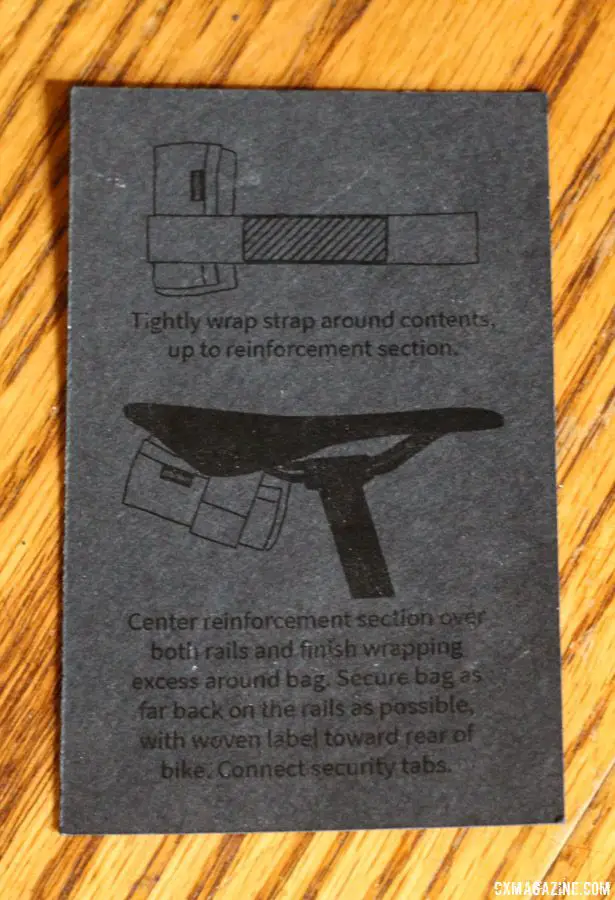
The instruction card that comes with the Saddle Bag has an elegant appearance but is a bit tough to read. Spurcycle Saddle Bag and Multi-Tool. © Cyclocross Magazine
Overall, the Spurcycle Saddle Bag provides an interesting alternative to “traditional” saddle bags. It provides plenty of room for storage during gravel rides and provides a swappability that fits my multi-discipline riding. However, the two times it slipped and unrolled during recent rides were rather frustrating.
Spurcycle Tool
Finding a multi-tool that is light and easy to use in tight spaces on the bike is an issue many cyclists seem to face. After several months of use, I can report that the Spurcycle Tool is one solution to this multi-tool problem.
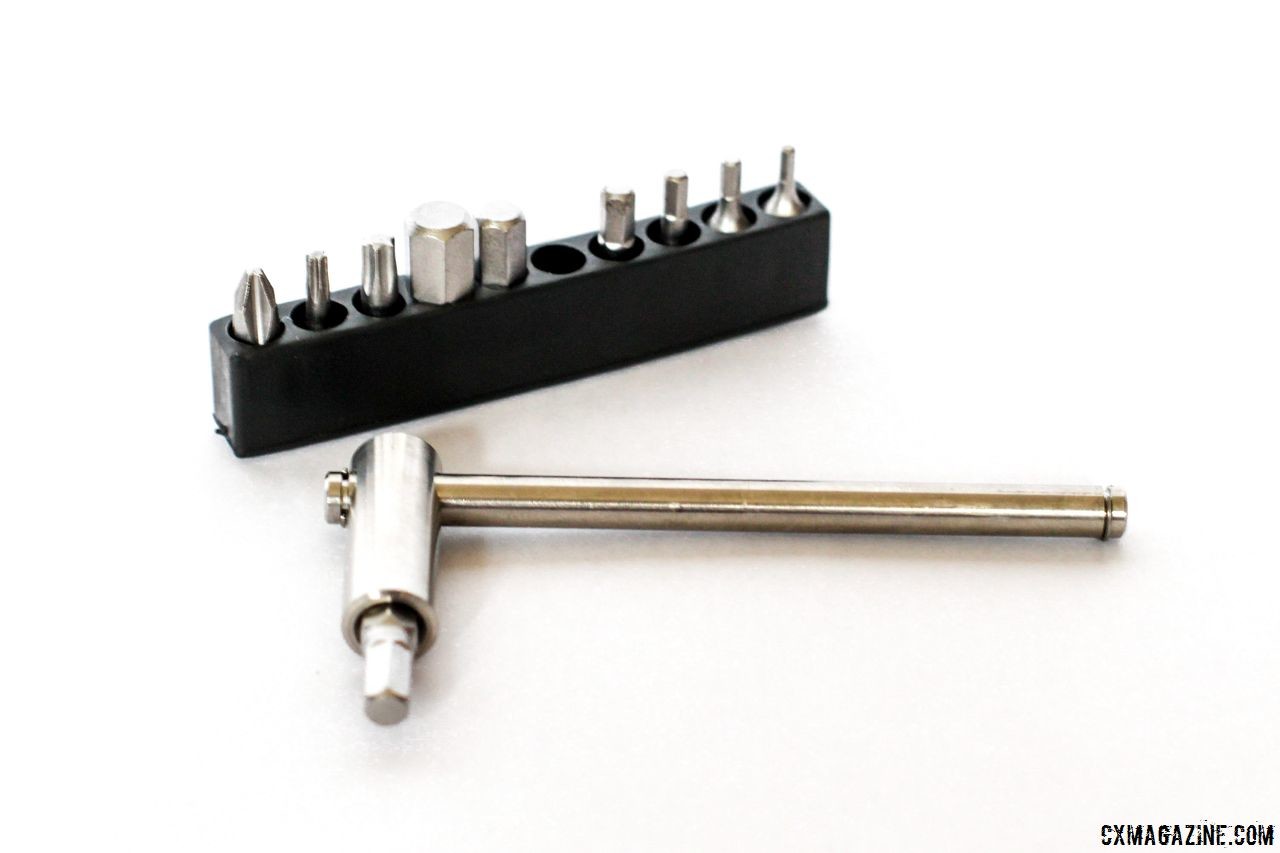
The Spurcycle Tool comes with a titanium handle and chuck and 10 steel bits. Spurcycle Saddle Bag and Multi-Tool. © Cyclocross Magazine
The design of the Spurcycle Tool is rather elegant, with a Grade 5 titanium handle and chuck and ten steel bits of commonly used sizes. A plastic holder keeps the bits secure, and the unit comes with a small carrying pouch made from the same X-Pac material as the Saddle Bag. The small pouch easily fits in your saddle bag or jersey pocket, and at 93g, the titanium and steel Spurcycle Tool is pretty light.
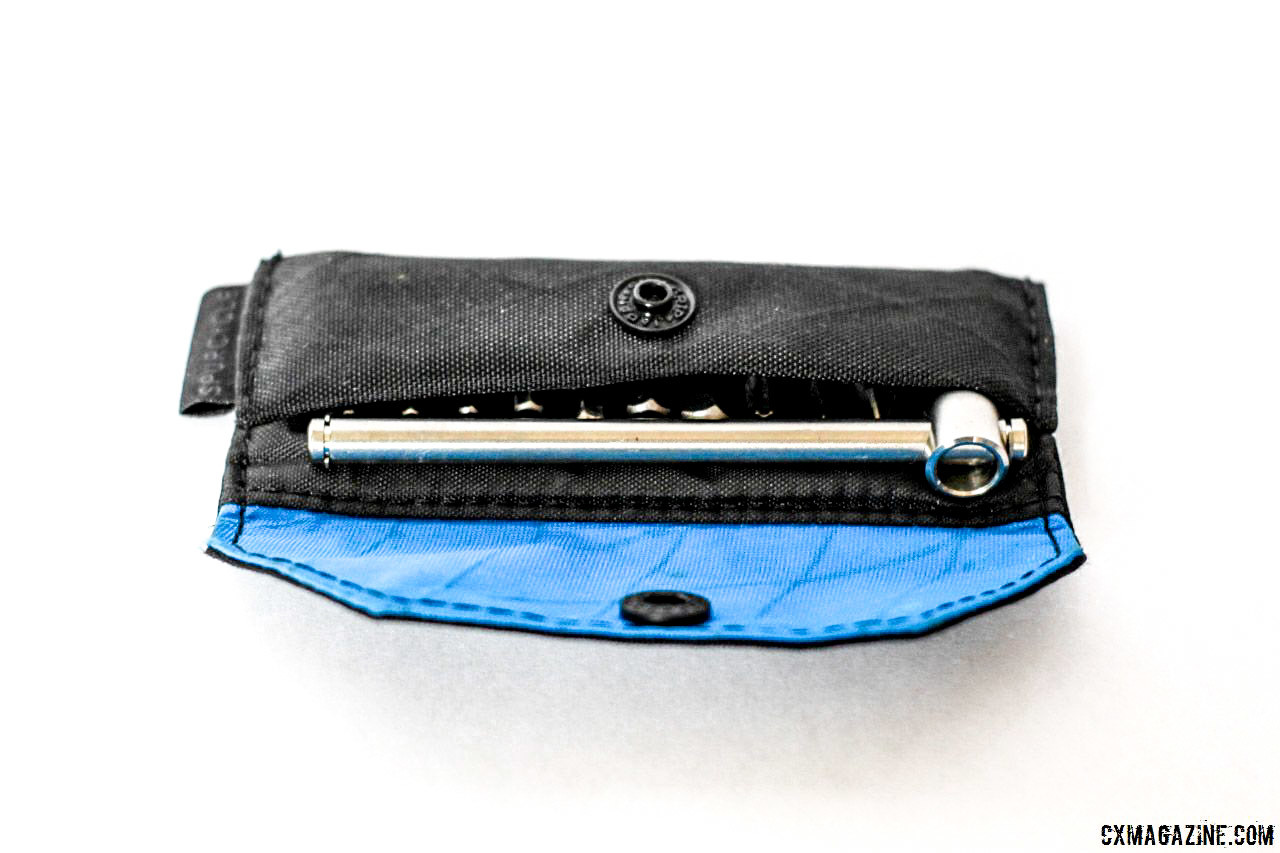
The tool slides into the carrying pouch for easy transport. Spurcycle Saddle Bag and Multi-Tool. © Cyclocross Magazine
The chrome-coated steel bits come in 10 sizes: 2mm, 2.5mm, 3mm, 4mm, 5mm, 6mm, 8mm, T10, T25 and P2.
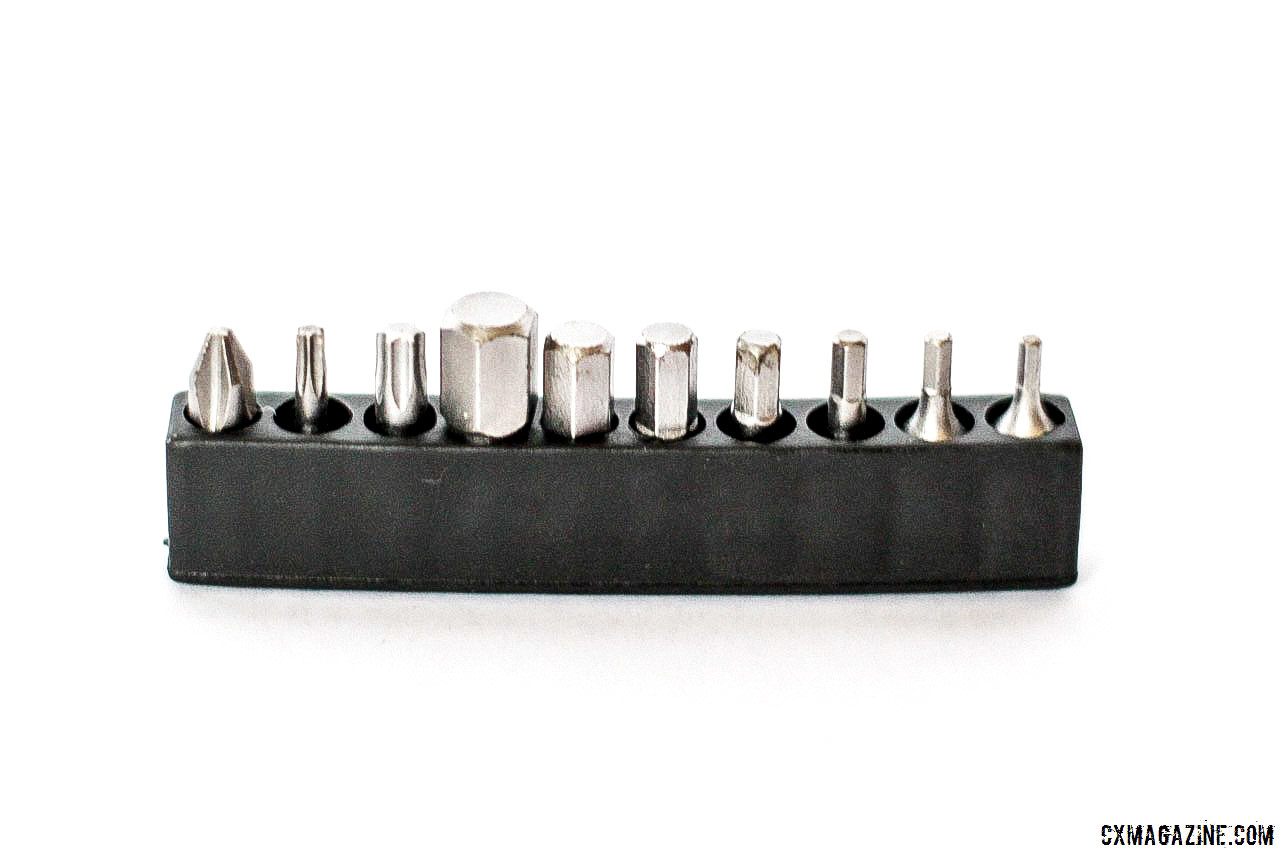
The multi-tool comes with 10 steel bits that can be easily swapped in and out. Spurcycle Saddle Bag and Multi-Tool. © Cyclocross Magazine
One complaint I have with many multi-tools is their lack of leverage. The handle on the Spurcycle Tool is long enough to provide plenty of torque, even in tight spots. The handle slides from one side to the other to help reduce the number of times you have to remove the bit and reposition the tool before turning another half or quarter turn. The design could be improved upon with a ratchet system similar to the one on the Prestacycle Prestaratchet to help reduce the number of times you have to remove and re-insert the bits.
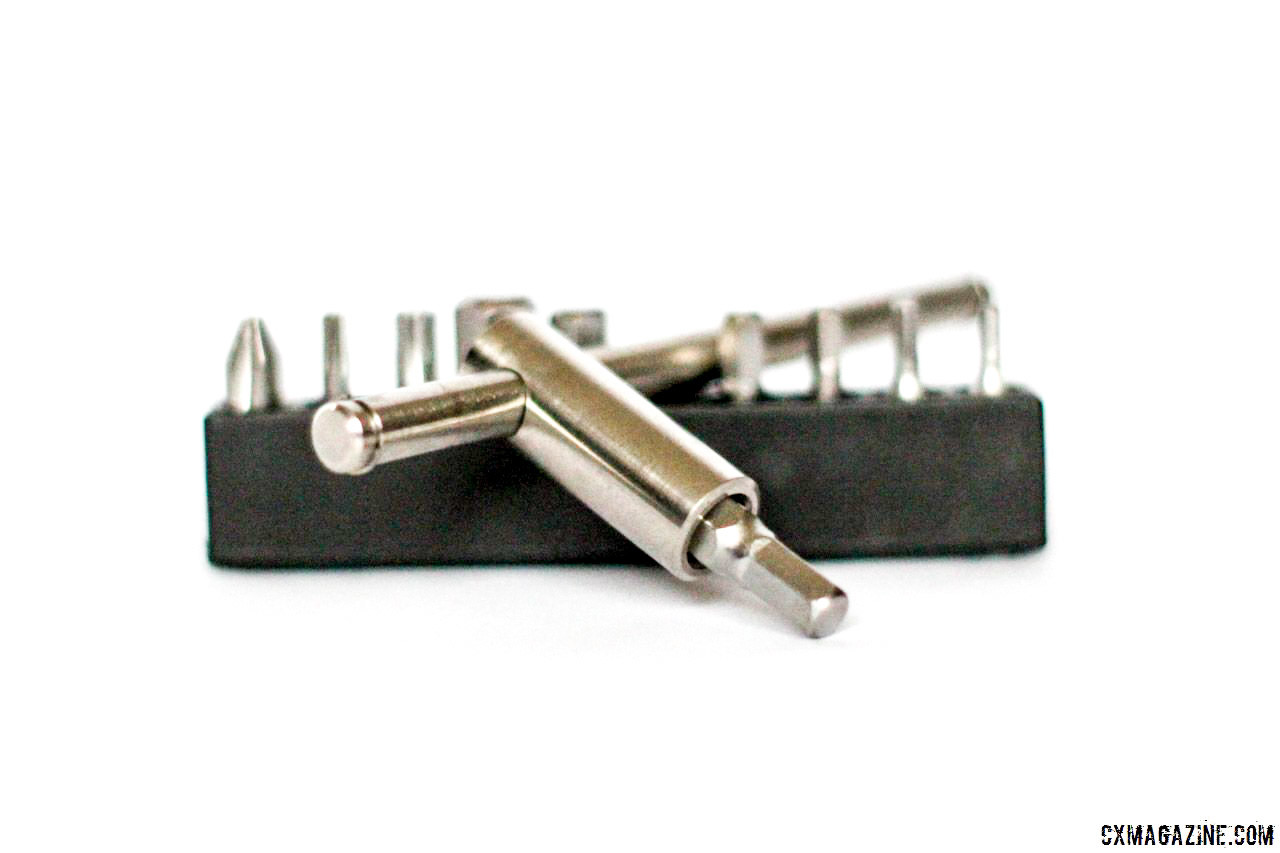
The multi-tool chuck slides along the titanium handle for easier use. Spurcycle Saddle Bag and Multi-Tool. © Cyclocross Magazine
When I first showed the Spurcycle Tool to my friend, the first thing she said was, “You’re going to lose all those bits.” Perhaps surprising even myself, I have not yet lost any of the bits. The plastic holder tightly holds them, so as long as you properly return them, they should stay secure.
The Spurcycle Tool is made in the U.S. with U.S.-sourced titanium and costs $69. It is light, portable and works well, so if you are looking to invest a few extra dollars in a multi-tool that fits those needs, the Spurcycle Tool is worth a look.
For more on the Spurcycle Saddle Bag and Tool multi-tool, see the specifications below.
For more gravel gear, see our growing archives of gravel-ready products.
Spurcycle Saddle Bag Specifications
Price: $45
Weight: 53g
Material: X-Pac VX42 polyester
Dimensions: 12.5 x 18 x 6cm
Contents: Bag, velcro strap
Spurcycle Multi-Tool Specifications
Price: $69
Weight: 93g
Material: Handle and chuck: Grade 5 titanium; Bits: Chrome-covered steel
Bits: 2mm, 2.5mm, 3mm, 4mm, 5mm, 6mm, 8mm, T10, T25 and P2
Contents: Handle and chuck, 10 bits, plastic storage tray, X-Pac carrying pouch
More Info: spurcycle.com













